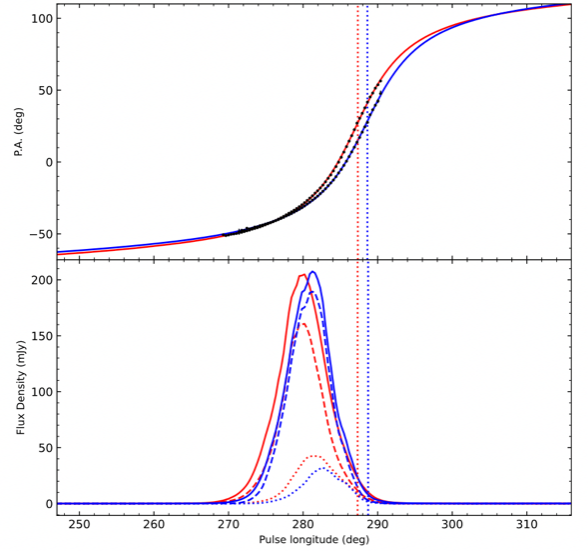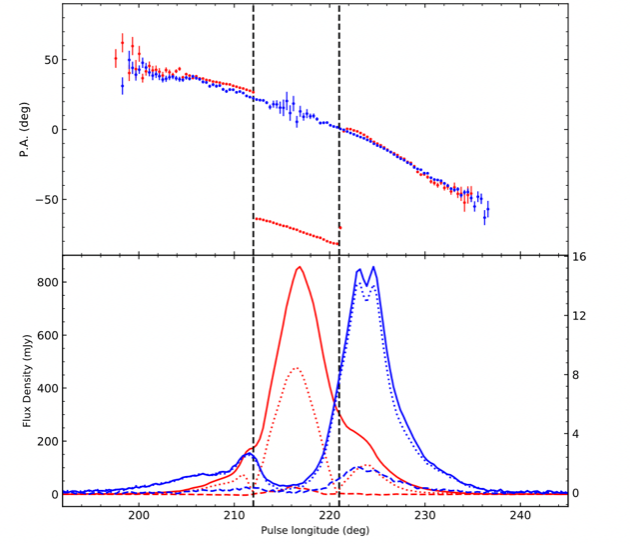Mode changing is an emission phenomenon where the mean pulse profile abruptly changes between two or sometimes more stable states. In theory, the changes of the current flow in the inner acceleration region (IAR) or pulsar magnetosphere geometry can result in mode changing. Polarimetric observations contain a wealth of information about emission and can be used to constrain the models of mode changing.
Dr. SUN Shengnan from the Xinjiang Astronomical Observatory (XAO), Chinese Academy of Sciences (CAS), along with her collaborators, found that the emissions of different states can be generated in different regions in the pulsar magnetosphere by analyzing the polarization of PSR J0614+2229 and PSR J1938+2213 using FAST observations.
The related results have been published in The Astrophysical Journal.
The researchers found that PSR J0614+2229 shows two distinct emission modes. The position angle (PA) swings of the two modes are different as in Figure 1, which suggested that emission height maybe changed in different modes. They found that the difference of the emission heights for the two modes was ~ 90 km by using the rotating vector model fitting.
PSR J0614+2229 becomes much brighter during the switching of the two modes and such a phenomenon has never been seen in mode-changing pulsars before. The brighter emissions during the mode-switching may be related to the triggering mechanism of the changing of different modes.
Moreover, the PSR J1938+2213 appears to consist of a weak emission state superposed by brighter burst emissions and the weak state is always present. The PA swings of the two states show remarkable differences, the burst state shows a sudden jump of about 90° (labeled by the vertical dashed lines in Figure 2), known as the orthogonal polarization mode (OPM) phenomenon. The OPM can only be seen in the burst state, rather than both states.
The results suggest that the emissions of two states are also generated in different regions in the pulsar magnetosphere.

Figure 1: Different modes of PSR J0614+2229 show different PA swings. The emission height difference between the two modes is ~ 90 km.

Figure 2: The weak state of PSR J1938+2213 is always present, while the burst emission appears superposed over the weak state.
Contact: SUN Shengnan
Xinjiang Astronomical Observatory
E-mail:sunshengnan@xao.ac.cn
Article link: https://iopscience.iop.org/article/10.3847/1538-4357/ac7c15/pdf